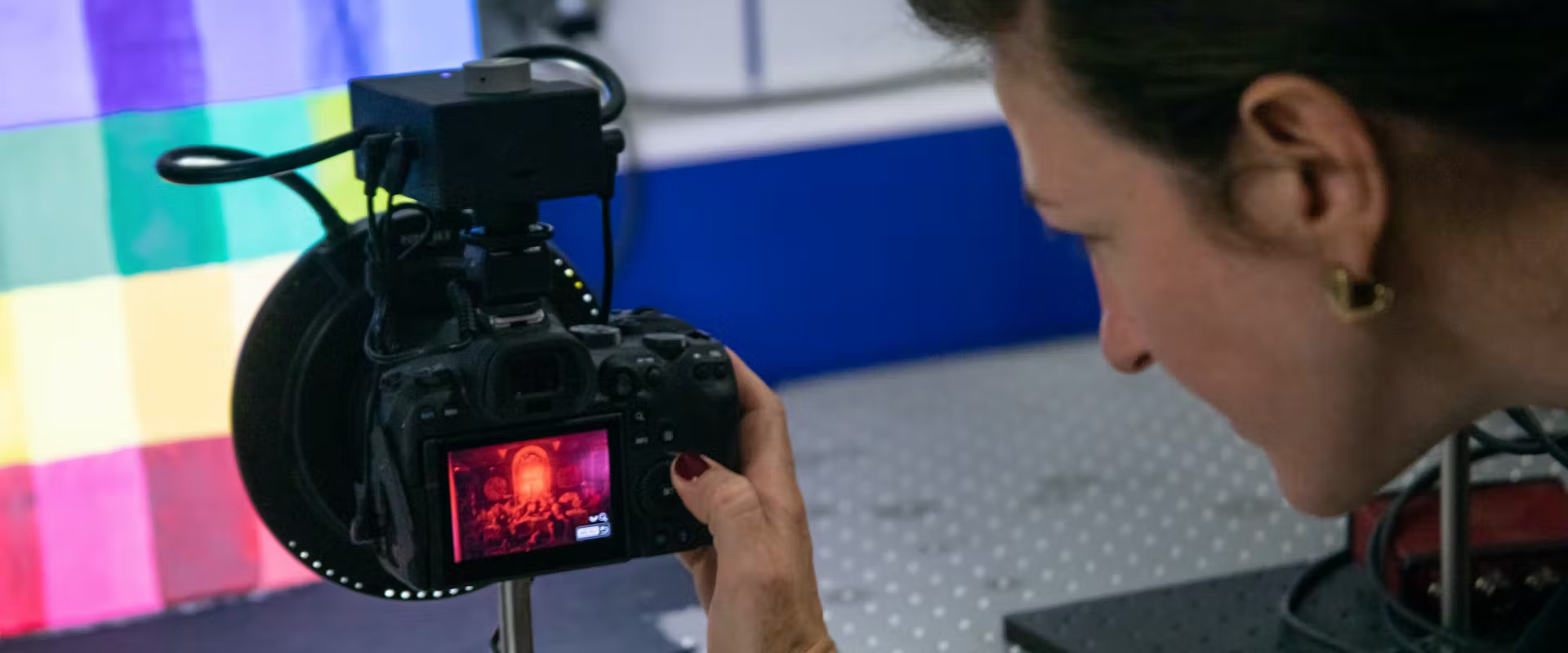From CSEMReviewed by Mychealla RiceOct 5 2022
Putting an end to misinterpretations, incorrect attributions and million-dollar forgery scandals in the art market: the Neuchâtel-based project MATIS, a start-up born of Swiss research and development centre CSEM, is applying deep tech and AI technology to revolutionise the way artworks are identified and to support art experts in their daily diagnostic task of authenticating paintings.

Image Credit: CSEM
Investing in art can be a financially and aesthetically rewarding endeavour, but it is certainly not without its risks. On the one hand, paintings bring a high return on investment and the sector is booming. On the other hand, however, even experienced collectors and investors can be duped by counterfeiters. According to estimates, 50 percent of all artworks in circulation are either wrongly attributed to artists or are classified as forgeries.
The most famous example is Salvator Mundi: a painting attributed to Leonardo da Vinci. In 2017, it sold for 470 million US dollars at British auction house Christie’s. This price tag made it the world's most expensive painting. However, the authenticity of this alleged work of da Vinci's is the subject of much debate. Some experts insist it is the most expensive fake of all time. This case highlights the fact that the art market is dependent on reliable expertise. Analysis of a painting rarely follows clear-cut rules of science. The risk of incorrect interpretation needs to be factored into any investment decision, in the same way as the costs of transporting and insuring the artwork are taken into account. A falsely claimed attribution can cost collectors and investors millions and can be highly damaging to a person's reputation and credibility. Adding to the costs are that art valuation technologies currently available on the market are complex, expensive and often unsuitable for day-to-day use by untrained operators.
The Swiss start-up MATIS, which stands for Monitoring Art with Technology, Innovation and Science, has developed an innovative, patentable solution to this very problem. By applying technology and extensive experience in the fields of image processing and AI in combination with affiliated company CSEM's special algorithms to detect and represent pigments and visualise drawings, the Neuchâtel-based project has created a cutting-edge optical and AI solution. This affordable, scientific method supports experts in their daily dealings with artworks.
Incorporating a user-friendly multispectral camera and an image processing algorithm, the MATIS camera unveils information hidden in the paintings. The camera transmits this information to a software known as PIGMA, an interface developed specially for MATIS. PIGMA combines classic signal processing and automated learning strategies to uncover features such as erased signatures, underdrawings, pigment images that are invisible to the naked eye and to help experts in their analyses. All information is saved in encrypted form and stored in a secure blockchain-based database, which facilitates further processes such as tracking, investment and insurance. In this way, this scientific method will identify the unaltered chemical and digital fingerprint of the painting, significantly increasing the reliability when it comes to interpretation of attributions and transactions. MATIS is currently in its first round of financing and the development of the technology is scheduled to come to market in the fourth quarter of 2023.
The technology of MATIS is unique at present and has a direct impact on total sales in the art market. It provides a solution for art experts, enabling them to drastically simplify the process of art authentication. The multispectral technology of MATIS, based on automated learning, unveils the real chemical and digital fingerprint of artworks and generates a quantifiable report with end-to-end encryption and a secure, unique database. This opens up a vast array of opportunities for the forgery detection market.
"The total addressable market is worth in excess of CHF 2.2 billion per year. For three years, we have been analysing the market and acquiring customers, and have developed a model that is tailored to our customers," explains CEO Marie Didier. "We are planning to enter the market in 2023."
Andrea Dunbar, Group Leader of Edge AI & Vision at CSEM, has overseen the project and is completely won over by the product that the team has developed: "MATIS is another example of a successful development that is now finding its way into the market as a start-up. We apply our many years of experience and our extensive expertise to generate new ideas and, ultimately, to create a marketable product. The start-ups based on CSEM technologies make up a growing proportion of Switzerland's economic vitality."